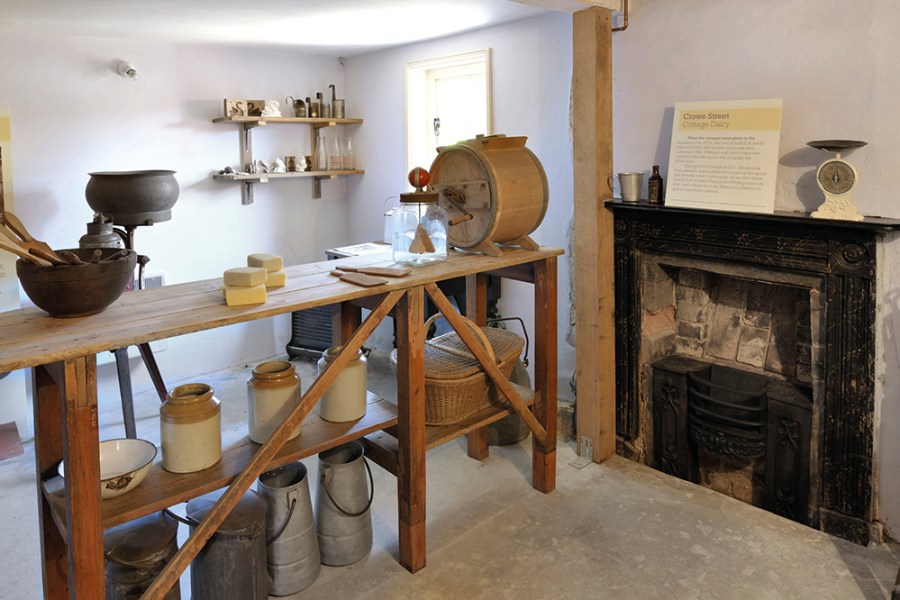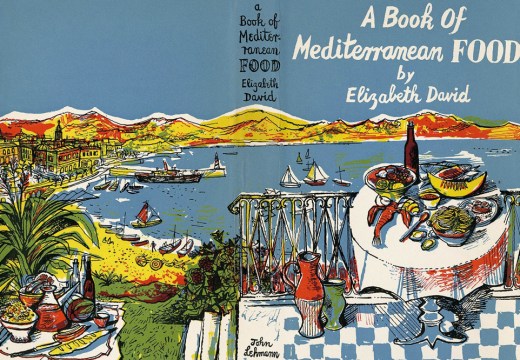As any museum visitor ought to know, eating and drinking – like heavy petting at the public baths – are strictly forbidden in the galleries. Perhaps that’s why there are so few museums dedicated to food and drink. Here and there, at big factories and breweries, are exhibitions that leaven corporate history with opportunities for tasting: Cadbury World in Birmingham, for instance, which entreats visitors to ‘Dive into our chocolatey world’.
More grounded are plans to transform the Museum of East Anglian Life, in the small Suffolk town of Stowmarket, into a museum dedicated to food and drink. From this month the museum will be known straightforwardly – and in the absence of any competitors in the UK – as the Food Museum. The existing museum, spread over 75 acres of countryside on the old Abbot’s Hall estate, is among those institutions that were founded in the decades following the Second World War in an effort to record rural traditions and skills as they began to fade from living memory. In terms of collecting, that usually meant preserving agricultural and domestic objects, as well as local buildings; the 20 publicly accessible buildings at the Museum of East Anglian Life include a medieval farmhouse and a 17th-century watermill. Such museums often espoused a commitment to ‘living history’, expressed in regular demonstrations of processes or crafts such as cheesemaking, smithery or charcoal burning.
‘A living history museum needs to keep pace with people who are alive,’ says Jenny Cousins, director of the Museum of East Anglian Life since 2016. For Cousins, the rebranding will allow the museum to fulfil this aim while remaining true to its history. The collection, she points out, predominantly reflects the agricultural complexion of a region that has long been known as ‘the breadbasket of England’. But in shifting the focus to food from agriculture, the museum’s audience will be inclined to engage more meaningfully with the latter: ‘If you start with a shopping basket or a plate and go backwards from there, it’s much easier to understand the ploughs or the watermill in our collection.’

A display at the Food Museum. Photo: Doug Atfield
The aim is to reconnect the production of food to its consumption, illuminating familiar sustenance rather than, say, the history of feasting or the rarefied contexts of haute cuisine. In practice, this means dividing the site into three areas defined by the simple headings of ‘Eat’, ‘Make’ and ‘Grow’. ‘We’re quite good on growing, and we’re quite good on making,’ Cousins says. ‘But we’re less good on the eating bit – and that’s part of what we’re trying to build.’ Intent on offering local produce, the museum will take back the management of its cafe (which is currently run by a contractor), and proposes to establish a restaurant, which will serve up the yield from its own walled garden. But tasting opportunities will also be integrated into the displays: ‘Hedgerow’, the first temporary exhibition in the hangar that formerly housed the Ransomes plough collection, will include a manned kitchen in which chefs will concoct dishes out of foraged fare (June 2022–May 2023).
Food cultivation and production are more readily paraded. In recent years, the museum has reorganised its model farm to make more of the illustrative potential of its crops and livestock. A four-course crop rotation embodies the history of agricultural innovation in the region; it was an East Anglian native, Charles ‘Turnip’ Townshend, who first proselytised for this system from his retirement at Raynham Hall, Norfolk, in the early 18th century. In the recently planted orchard, the various cultivars of apples, pears and plums are labelled not so much with information about their botanical provenance as with intelligence about the flavour and uses of their fruit: here are trees with tasting notes.
Museum rebrands are usually dependent on funding windfalls. They often entail extended closure for construction, refurbishment and redisplay. The Food Museum has no such luxuries: it has set itself the task of knocking up something special from what it has in its store-cupboard, and with the guests already seated at the table. But the larder here is not bare: the museum has a collection of domestic kitchens, including that left to the museum by Emily Wilding, still in situ in the wattle-and-daub cottage from which she ran the Abbot’s Hall dairy in the decades after the war. There are stories to tell about, for example, the Land Girls who worked on the estate in the 1940s. Partnerships are already in place with Leeds University and the Quadram Institute (for food science) on projects exploring dialect words for food and school dinners.
Visitors to the Food Museum should not expect a comprehensive history of food. What they will find is an unpretentious institution, one that is admirably open to experimenting with a subject which is rooted in East Anglian soil but germane to us all. Directly opposite the museum’s entrance crouches a vast Asda superstore: a provocation to display where our food comes from, if ever there was one.
From the March 2022 issue of Apollo. Preview and subscribe here.














![Masterpiece [Re]discovery 2022. Photo: Ben Fisher Photography, courtesy of Masterpiece London](http://www.apollo-magazine.com/wp-content/uploads/2022/07/MPL2022_4263.jpg)
Suzanne Valadon’s shifting gaze